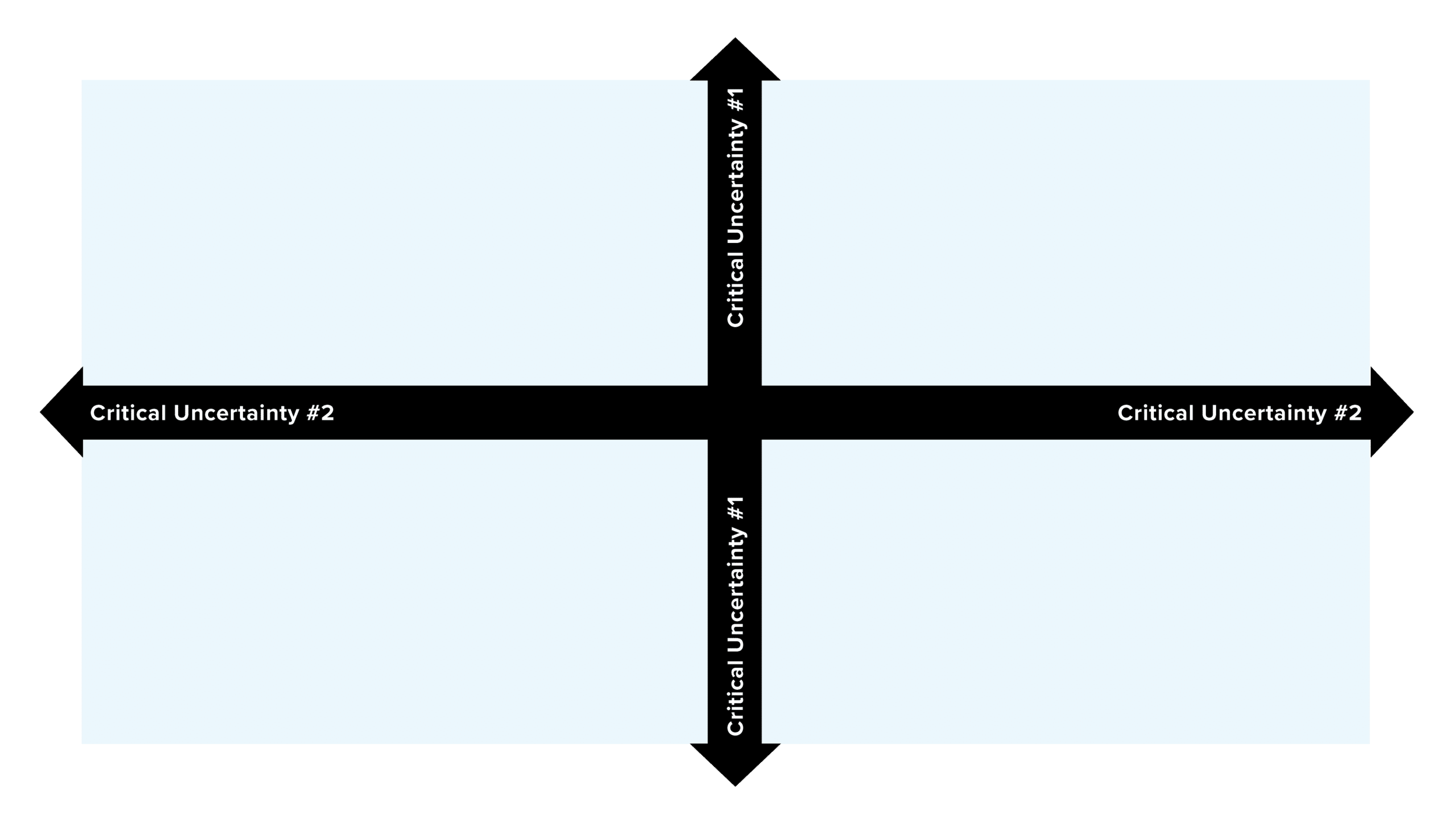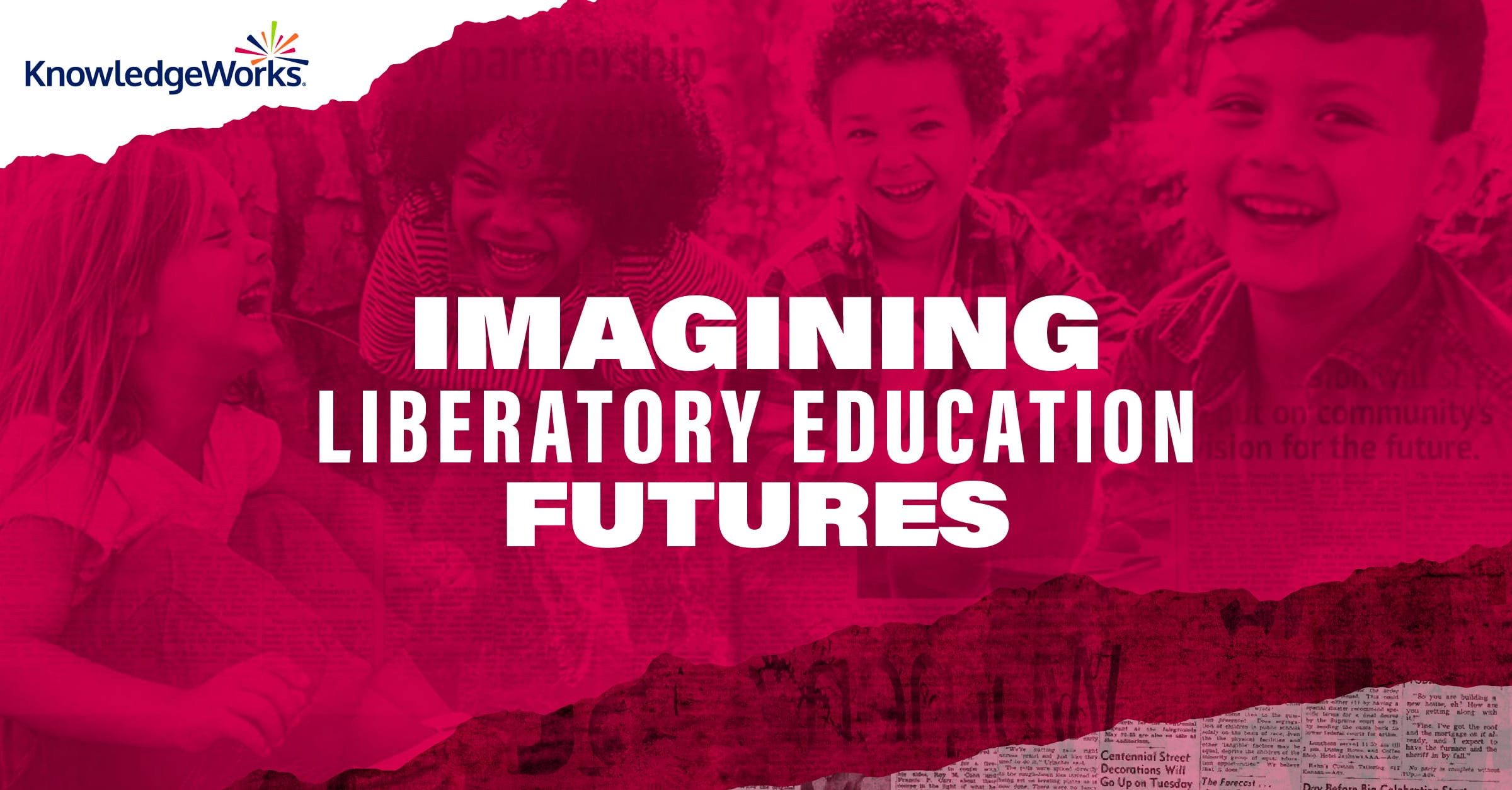One of the ground rules for thinking about the future is that the future is uncertain and unknowable. To put it a different way, no one can predict the future. So why bother to think about it?
Thinking about the future has value in that it asks us to spend time with uncertainty. In a world that often prizes certainty and decisive action, taking the time to wrestle with the unknown can help us clarify what we want from the future. KnowledgeWorks’ most recent forecast, Imagining Liberatory Education Futures, uses uncertainty as a starting point to envision futures for learning that are free of systems and structures of oppression. This approach can also help us gain insights that can unlock new innovations, aid in reframing problems and challenges and assist in making choices and plans that consider a wider set of possibilities than are typically found in a traditional planning process.
KnowledgeWorks’ most recent forecast, Imagining Liberatory Education Futures, uses uncertainty as a starting point to envision futures for learning that are free of systems and structures of oppression.
The 2×2 matrix
People who explore the future often create scenarios – stories about the future – to give shape to future possibilities in a systematic fashion. One tool for generating scenarios is a 2×2 matrix.

Popularized by the Global Business Network (GBN), the 2×2 matrix identifies critical uncertainties that will impact a domain. Critical uncertainties are big, driving forces of change that we do not know enough about to describe with confidence. The 2×2 matrix positions them as intersecting axes. The poles of each axis reflect the extreme ends of the critical uncertainty that it represents. Each quadrant of the 2×2 matrix becomes a scenario that describes one possible future. Because the scenarios look at how the extreme ends of two critical uncertainties intersect, the four scenarios typically end up being pretty different from one another.
Critical uncertainties for liberatory education
Imagining Liberatory Education Futures used the 2×2 matrix tool to generate scenarios exploring futures of liberatory education. The two critical uncertainties that the writing team and collaborators surfaced are summarized below. You can also read the full text in the forecast.
- Level of social cohesion
This uncertainty explores extent to which people will recognize one another’s humanity, foster interconnection and respect and be willing to work across differences for mutual well-being. Two guiding questions for thinking through what high and low levels of social cohesion might look like are:
-
- Will people foster trust across groups or promote division and fear of difference?
- Will those who have enjoyed relative social privilege work to maintain the status quo or choose to engage in dismantling oppressive systems?
- Responsiveness of public institutions
This uncertainty explores the extent to which various types of public institutions will recognize the needs and demands of their constituents and share power in creating solutions. Two guiding questions for considering how the high and low levels of responsiveness of public institutions might appear are:
-
- Will public institutions build mutual trust with their constituents, or will they erode it?
- Will they share power and responsibility, or will they hoard them?
The world is an uncertain place. Having tools that can turn uncertainty into an asset rather than a risk can help us make better decisions and create better futures.
When thinking about liberatory education, what critical uncertainties come to mind? How might you employ a 2×2 matrix in your own context? Register for our webinar and let us know!






